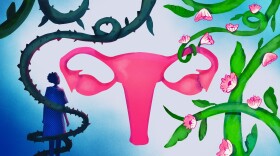
Nell Greenfieldboyce
Nell Greenfieldboyce is a NPR science correspondent.
With reporting focused on general science, NASA, and the intersection between technology and society, Greenfieldboyce has been on the science desk's technology beat since she joined NPR in 2005.
In that time Greenfieldboyce has reported on topics including the narwhals in Greenland, the ending of the space shuttle program, and the reasons why independent truckers don't want electronic tracking in their cabs.
Much of Greenfieldboyce's reporting reflects an interest in discovering how applied science and technology connects with people and culture. She has worked on stories spanning issues such as pet cloning, gene therapy, ballistics, and federal regulation of new technology.
Prior to NPR, Greenfieldboyce spent a decade working in print, mostly magazines including U.S. News & World Report and New Scientist.
A graduate of Johns Hopkins, earning her Bachelor's of Arts degree in social sciences and a Master's of Arts degree in science writing, Greenfieldboyce taught science writing for four years at the university. She was honored for her talents with the Evert Clark/Seth Payne Award for Young Science Journalists.
-
In the week since the first images from the James Webb Space Telescope were unveiled, astronomers have been poring through all the observations it's made so far--and they're happily overwhelmed.
-
In the week since the first James Webb Space Telescope images were unveiled, astronomers have been poring over all its observations so far. What they've seen has them giddy.
-
Doctors say they're seeing a surge in the number of women who want their "tubes tied." But hospital capacity, paperwork, religion and personal opinion are just some of the reasons requests get denied.
-
The largest bacteria known to science have been discovered in the Caribbean. They're visible to the naked eye and surprisingly complex.
-
An isolated population of polar bears in southeast Greenland has learned to hunt on freshwater glacier ice. That means they may be able to survive longer as climate change makes sea ice scarce.
-
The amount of resources devoted to studying gun violence is paltry compared to its public health impact. Still, the evidence shows certain policies might help prevent mass shootings.
-
An image of what looks like a glowing orange donut is actually the first picture of the supermassive black hole at the center of the Milky Way, our home galaxy.
-
The first ever image of the black hole at the center of our galaxy has been released by scientists, who say it shows Albert Einstein was right about gravity.
-
The CDC reports a historic increase in firearm deaths. During the pandemic, there has been a 35% increase in the firearm homicide rate, and suicides by firearm also are persistently high.
-
The rate of U.S. gun homicides jumped nearly 35% in 2020 to the highest level in more than 25 years. And gaps widened for groups already at the highest risk, especially Black men and boys.







